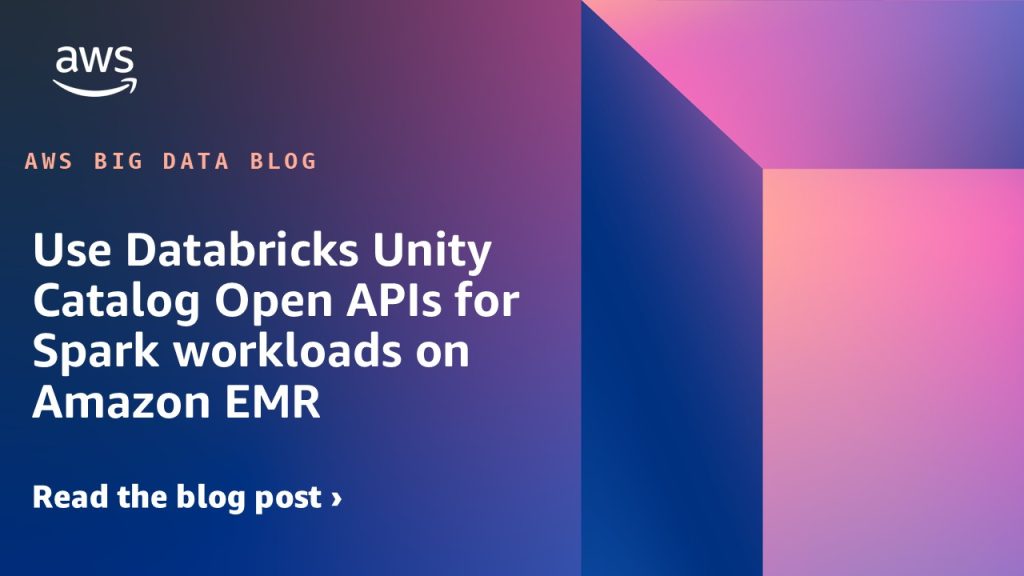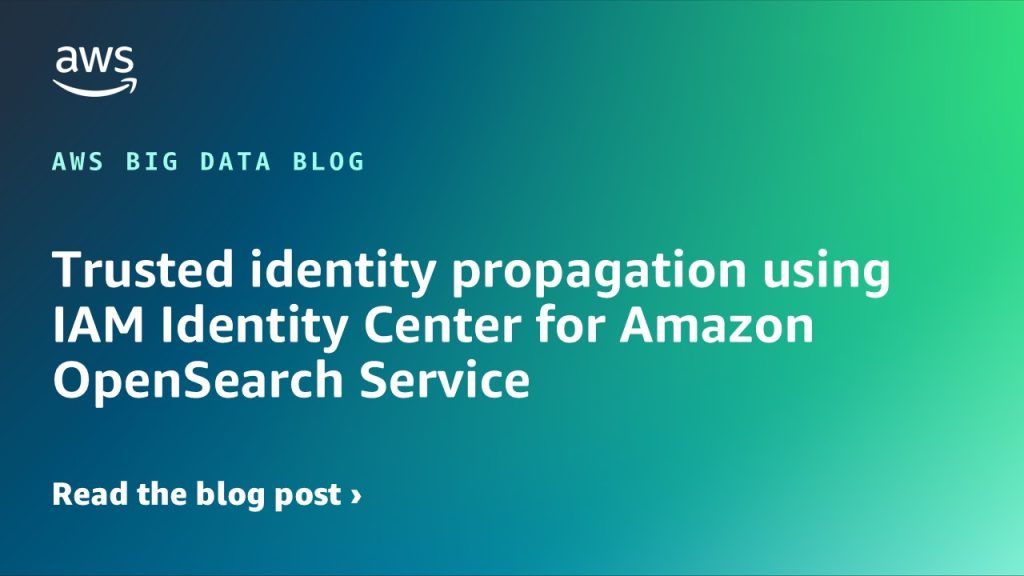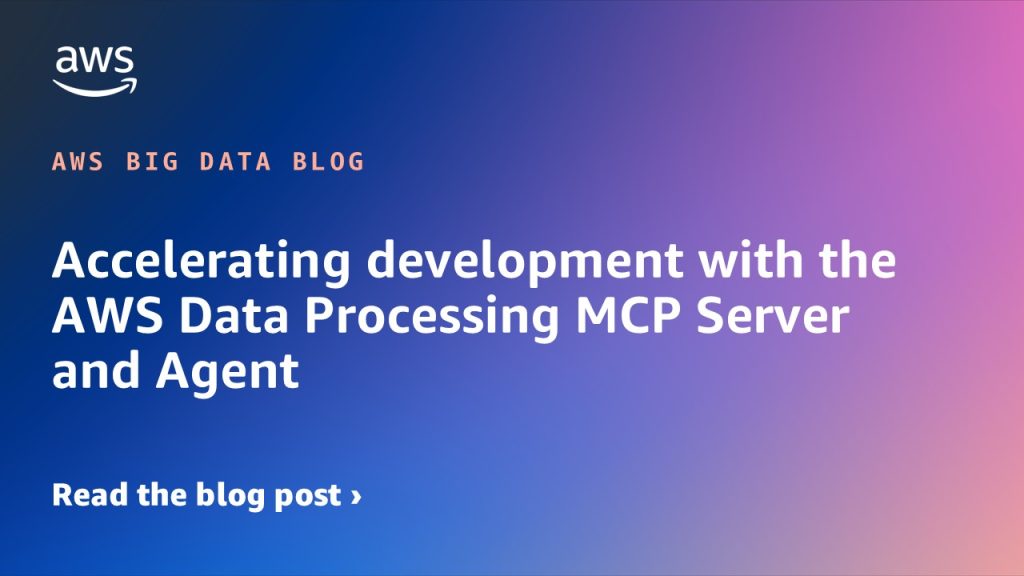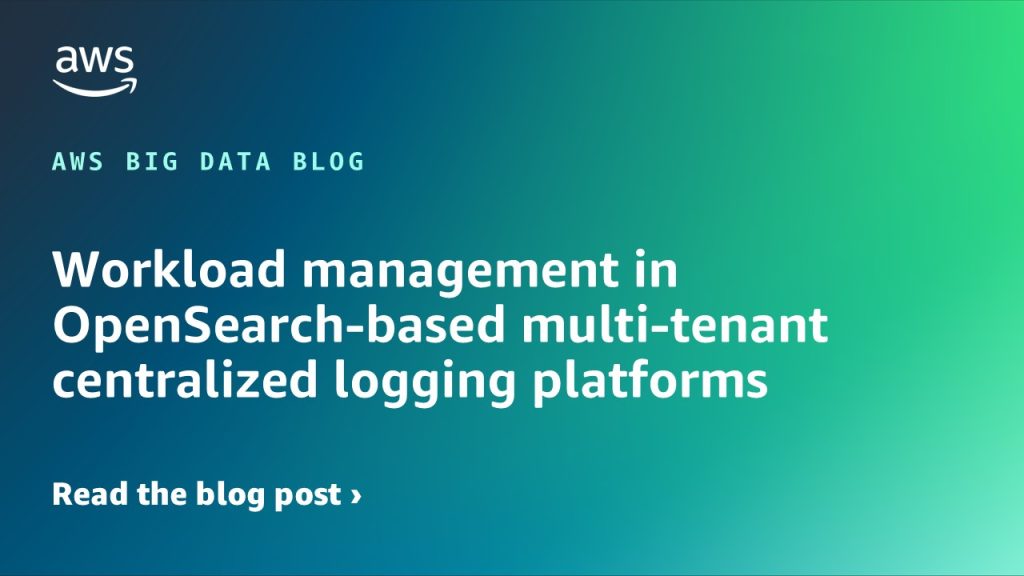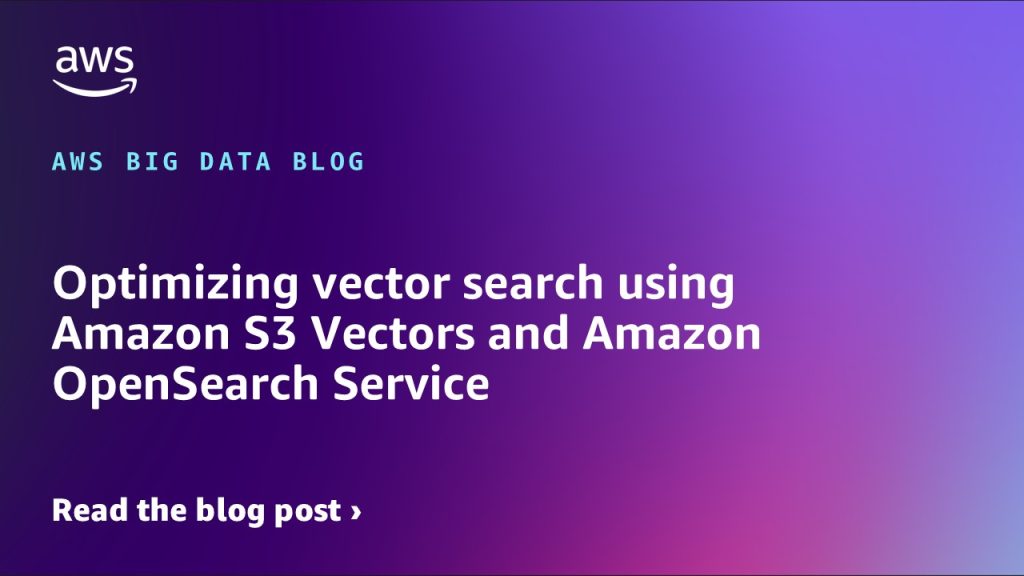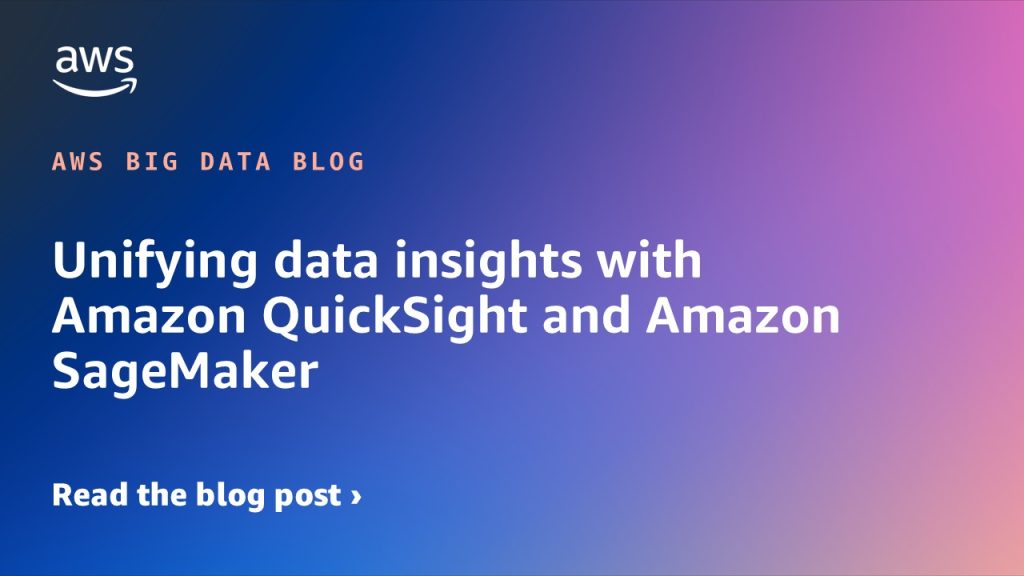AWS Big Data Blog
Category: Analytics
Use Databricks Unity Catalog Open APIs for Spark workloads on Amazon EMR
In this post, we demonstrate the powerful interoperability between Amazon EMR and Databricks Unity Catalog by walking through how to enable external access to Unity Catalog, configure EMR Spark to connect seamlessly with Unity Catalog, and perform DML and DDL operations on Unity Catalog tables using EMR Serverless.
Trusted identity propagation using IAM Identity Center for Amazon OpenSearch Service
Now, by using trusted identity propagation, IAM Identity Center provides a new, direct method for accessing data in OpenSearch Service. In this post, we outline how you can take advantage of this new access method to simplify data access using the OpenSearch UI and still maintain robust role-based access control for your OpenSearch data.
Amazon OpenSearch Service 101: How many shards do I need
Customers new to Amazon OpenSearch Service often ask how many shards their indexes need. An index is a collection of shards, and an index’s shard count can affect both indexing and search request efficiency. OpenSearch Service can take in large amounts of data, split it into smaller units called shards, and distribute those shards across a dynamically changing set of instances. In this post, we provide some practical guidance for determining the ideal shard count for your use case.
Introducing MCP Server for Apache Spark History Server for AI-powered debugging and optimization
Today, we’re announcing the open source release of Spark History Server MCP, a specialized Model Context Protocol (MCP) server that transforms this workflow by enabling AI assistants to access and analyze your existing Spark History Server data through natural language interactions. This project, developed collaboratively by AWS open source and Amazon SageMaker Data Processing, turns complex debugging sessions into conversational interactions that deliver faster, more accurate insights without requiring changes to your current Spark infrastructure. You can use this MCP server with your self-managed or AWS managed Spark History Servers to analyze Spark applications running in the cloud or on-premises deployments.
Accelerating development with the AWS Data Processing MCP Server and Agent
We’re excited to introduce the AWS Data Processing MCP Server, an open-source tool that uses the Model Context Protocol (MCP) to simplify analytics environment setup on AWS. In this post, we explore how the AWS Data Processing MCP Server accelerates analytics solution development and how data engineers can transform raw data into business-ready insights through AI-assisted workflows, significantly reducing development time and complexity.
Workload management in OpenSearch-based multi-tenant centralized logging platforms
When you use Amazon OpenSearch Service to store and analyze log data, whether as a developer or an IT admin, you must balance these tenants to make sure you deliver the resources to each tenant so they can ingest, store, and query their data. In this post, we present a multi-layered workload management framework with a rules-based proxy and OpenSearch workload management that can effectively address these challenges.
Optimizing vector search using Amazon S3 Vectors and Amazon OpenSearch Service
We now have a public preview of two integrations between Amazon Simple Storage Service (Amazon S3) Vectors and Amazon OpenSearch Service that give you more flexibility in how you store and search vector embeddings. In this post, we walk through this seamless integration, providing you with flexible options for vector search implementation.
Unifying data insights with Amazon QuickSight and Amazon SageMaker
Amazon SageMaker has announced an integration with Amazon QuickSight, bringing together data in SageMaker seamlessly with QuickSight capabilities like interactive dashboards, pixel perfect reports and generative business intelligence (BI)—all in a governed and automated manner. In this post, we walk through the complete process of integrating Amazon QuickSight with Amazon SageMaker Unified Studio, demonstrating how teams can move from raw data to published dashboards in a secure and governed environment.
Integrating Amazon OpenSearch Ingestion with Amazon RDS and Amazon Aurora
We are happy to announce the general availability of the integration of Amazon OpenSearch Service with Amazon Relational Database Service (Amazon RDS) and Amazon Aurora. This new integration eliminates complex data pipelines and enables near real-time data synchronization between Amazon Aurora (including Amazon Aurora MySQL-Compatible Edition and Amazon Aurora PostgreSQL-Compatible Edition) and Amazon RDS databases (including Amazon RDS for MySQL and Amazon RDS for PostgreSQL), and Amazon OpenSearch Service, unlocking advanced search capabilities such as hybrid search, ranked results, and faceted search on transactional databases.
Scale your AWS Glue for Apache Spark jobs with R type, G.12X, and G.16X workers
This post demonstrates how AWS Glue R type, G.12X, and G.16X workers help you scale up your AWS Glue for Apache Spark jobs.
